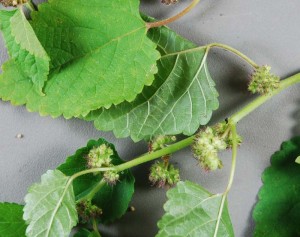
Fact Sheets And Publications
- Health & Well-being
-
Agricultural Programs
- Agribusiness
- Animal Science
- Beginning Farmer Program
- Commercial Crops
- Commericial Horticulture
- Delaware Soil Testing Program
- Disease Management
- Farm Vitality and Health Project
- Irrigation
- Nutrient Management
-
Insect Pest Management
- Insect Trapping Program
- IPM Hot Topics
- Commercial Field Crop Insect Management
- Commercial Field Crop Disease Management
- Commercial Fruit & Vegetable Crop Pest Management
- EIPM Implementation Projects
- Pollinators
- Research and Extension Demonstration Results
- Brown Marmorated Stink Bug (BMSB) Management, Research, and Resources
- Publications
- Pesticide Safety Education Program
- UD Plant Diagnostic Clinic
- Variety Trials
- Weed Science
- Certified Crop Advisor Program
- Poultry Biosecurity
- 4-H
-
Horticulture
- Climate Variability and Change
- Delaware Soil Testing Program
- Forestry
- Lawn and Garden
- Master Gardeners
- Master Naturalist Program
-
Nutrient Management
- Nutrient Management Certification
- Continuing Education for Nutrient Management
- Nutrient Management Planning Resources
- Commercial Nutrient Handler Resources
- Poultry Litter and Manure Management
- Turf Management
- Agriculture Notebook
- Horticulture Handbook
- Agriculture & Horticulture Handbooks
- Crop Production
- Soil Fertility
- Delaware Climate Change Coordination Initiative (DECCCI)
- Salt Impacted Agricultural Lands

Mulberry Weed (Fatoua villosa)
Reviewed in February 2025 | Written by: Nancy Gregory
Description and Geographic Distribution
Mulberry Weed or hairy crabweed (Fatoua villosa) (Thunberg) Nakai is an invasive exotic Asian species from the Mulberry family (Moraceae). First reported in Louisiana in 1964 by J.W. Thieret but present years earlier, it has since spread to much of the Eastern United States, appearing throughout the Southern states and as far north as Michigan and Delaware. In Delaware, it was detected in 2013. It is also present on the West Coast, with documented occurrences in Washington and California. Appearing much like a nettle (Urticaceae), it is an herbaceous erect annual. It is characterized by papery, heart-shaped, alternate leaves. The plant has densely pubescent (hairy) stems. The flowers are dense, light green cymes (clusters) with no true petals, and seeds that are forcibly expelled. It flowers in the mid-summer and fall.
Much of the spread of Fatoua villosa can be attributed to its presence in horticultural material and nursery stock. It is also likely to spread through purchased top soil that contains its abundantly produced and explosively projected seeds. It favors disturbed areas and is an especially problematic weed in agricultural fields, greenhouses and gardens.
Management
Mulberry weed should be removed from garden beds or pots and discarded in the trash, not composted nearby. The plant produces an abundant numbers of seeds, so it should be treated with herbicide or rogued out before it sets seed. A two to three inch layer of mulch can prevent most seed germination, as can pre-emergent herbicides. Post-emergent herbicides would also be effective.
Reference to commercial products or trade names does not imply endorsement by University of Delaware Cooperative Extension.
UD Cooperative Extension
This institution is an equal opportunity provider.
In accordance with Federal law and U.S. Department of Agriculture policy, Cooperative Extension is prohibited from discriminating on the basis of race, color, national origin, sex, age, or disability.
The University of Delaware is an Equal Opportunity Institution and Provider. Visit UD’s Office of Equity & Inclusion to learn more.
Additional Links
531 South College Avenue Newark, DE 19716 (302) 831-2501


